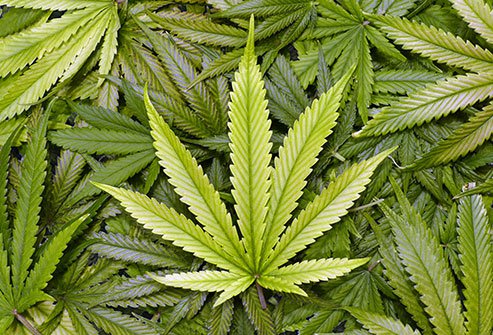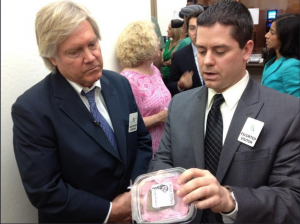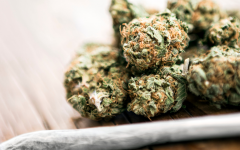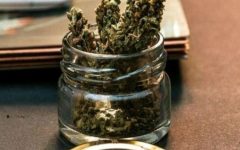
Medicinal Marijuana plant (Photo: Shutterstock)
There Is Nothing Fair About The Fair Market Value Of Cannabis
How much longer can record revenues from cannabis taxes be sustained if those in the industry are struggling to keep their businesses afloat?
By Kiera Sears, May 19, 2023 11:02 am
When adult-use cannabis was legalized by Nevadans at the end of 2016, the Department of Taxation (DoT) took over as the governing body of its cannabis program, and instituted two new taxes that continue today under the Cannabis Compliance Board (CCB) – a 15% wholesale excise tax imposed upon cultivation facilities, and a 10% retail excise tax imposed upon dispensaries.
The excise taxes contributed by the Nevada cannabis industry comprise 1.6% of the State’s total revenue. Not bad for a burgeoning industry.
The following amounts represent the cannabis tax revenue for each fiscal year, beginning in 2018:
Fiscal Year. Taxes Paid By Cultivations: By Dispensaries: Total Taxes Paid:
- 2018. $27.3 M: $42.5 M: $69.8 Million
- 2019. $44.0 M: $55.2 M: $99.2 Million
- 2020. $44.8 M: $60.4 M: $105.2 Million
- 2021. $65.6 M: $92.1 M: $157.8 Million
- 2022. $63.0 M: $89.3 M: $152.3 Million
- 2023. $35.3 M: $52.4 M: $87.7 Million
Following every calendar quarter, all cultivation facilities (medical and adult-use) are required to submit to the DoT a form that separately reports the facility’s current production, its total sales, and its individual prices by product type. The DoT then organizes this data numerically and uses it to calculate their own “fair market value” (FMV) for each category of cannabis – that is, the value established by the Department based upon their own determination of what price a buyer would pay to a seller, in an arm’s length transaction, within the wholesale market. Although the statute provides no methodology for how the FMV should be determined, the DoT has decided to take all reported data, organize it from high to low, and use the median (exact middle number listed) as its bi-annual FMV – to which all facilities are then taxed upon.
Here is an example: for the period of January 1, 2022 – June 30, 2022, 40,846 sales prices were reported by Nevada cultivation facilities for their prior quarter’s flower sales to other cannabis establishments. For that particular period, the highest price paid for a pound of cannabis flower was $11,893 (which is actually absurd), and where the lowest price was $360 (equally absurd). The median, or exact middle price listed in the data set, of all 40,000 observations, was $2,462 – thus, this becomes the “fair” market value they chose. This means that for those next 6 reporting months, every cultivation facility, for every pound of cannabis flower sold, would be taxed at a rate of 15% of $2,462 ($369.30), rather than the price it was actually sold at. So, for the entities that had to sell a pound of cannabis for $360, they would be taxed a total of $369.30 for that pound, which means not only did they not profit from the sale, but they had to pay the Department everything they made from that sale, plus an additional $10. That is on top of the cost to make the product, the labor to cultivate it, the cost to package it, and to distribute it, etc., etc., etc.
And yet, for the entity that was somehow able to sell their pound of flower for $11,893 (probably to their own production facility for processing, as production facilities have no extra tax), they too had to pay $369.30 in excise tax on that specific pound, and instead of making negative profit like their less fortunate counterpart, they were able to realize $11,523.70.
Again, great for our State, but in reality, how much longer can these record revenues be sustained if those in the industry are struggling to keep their businesses afloat due to over-regulation, imposed fees, and unfair “Fair Market Values?”

For background, in 2017, after Question 2 passed and adult-use cannabis became legal, production facilities were exempted from paying the excise tax, the excise rates were raised from 2% to 15% and 10% respectively, and the “fair market value” caveat was created. The CCB came on board in 2019, took first dibs of the 15% excise tax funds, and determined that any portion “left over” was to be deposited into the State Education Fund. Currently, the CCB consists of four appointees of former Democratic Governor Steve Sisolak and one appointee by Republican Governor Joe Lombardo.
$34M was distributed for education in 2017-2018, $49.1M in 2018-2019, $39.7M in 2019-2020, $157.8M in 2020-21, and $147M in 2021-2022. Despite millions in tax revenue, our cultivations are struggling to survive and our schools have very little to show for it. The DoT (on behalf of the CCB) has taken in $672 Million, and yet five years and at least $427 Million later, Nevada remains the worst in the country for education.
While Nevada statute mandates that the retail excise tax be deposited in its entirety to the State Education Fund, it does not require the same of its sister tax. The wholesale excise tax imposed upon cultivations must first be distributed to the CCB and local governments, in order to pay for the costs of implementing the program, and “if any money remains… to the credit of the State Education Fund.”
Yet, once the provisions of NRS 678C and 678D are carried out, and the program has been implemented (which it has), how many more implementations of the same program are necessary? The amount of licensees are all but capped, and the only provisions that continue to expand are the CCB’s costly regulations, violations and penalties which change monthly pursuant to their meetings.
Currently, the CCB requires each facility to pay an annual licensing fee for every license held. To be clear, the average licensee hold two licenses for each facility (medical and recreational) and is required to pay not only an initial state and local licensing fee (at least $30,000 for adult-use dispensaries), but annual licensing fees thereafter (at least $10,000 for adult-use cultivations). Facilities are charged an hourly rate of $111 for any and all work carried out by a CCB agent (including travel time), and should a facility violate any one of the countless statutory and regulatory provisions, it faces penalties up to $90,000 per violation. Since July 2020, the CCB has instituted 85 formal complaints against its industry participants, with some penalties reaching hundreds of thousands of dollars per complaint. One might wonder what the end goal of this program actually is.
According to an excellent expose by Dana Gentry of The Nevada Current: “A presentation from the NCA (Nevada Cannabis Association) noted the cost of regulation, including “excessive fines, fees and time and effort charges” has skyrocketed in recent years. The state’s time and effort billings to licensees totaled $388,300 in 2019, $1.7 million in 2022, and are projected at $2.54 million for 2023, based on data from the state.”
Despite so many cultivation facilities experiencing sharp downturns in the market, and facing the reality that many dispensaries are vertically integrated and purchase only their own flower, the Fair Market Value has failed to reflect the reality that independent cultivations are struggling while the CCB seems to be thriving.
Assembly Bill 430, sponsored by the Committee on Revenue, aims to address certain discrepancies in the calculation of Fair Market Value by considering an actual sales price for an arms length transaction. The bill is scheduled to be heard this afternoon by the Ways and Means Committee and again on May 25th.





There was a similar article about California. They should have just allowed people to grow their own. With a small grow industry for disabled etc.
$15 to $ 30 for a gram of 90% thc extract. ? It probably last most people a long time.
If your injured on the job and test positive for pot, they will stiff you on worker’s compensation benefits